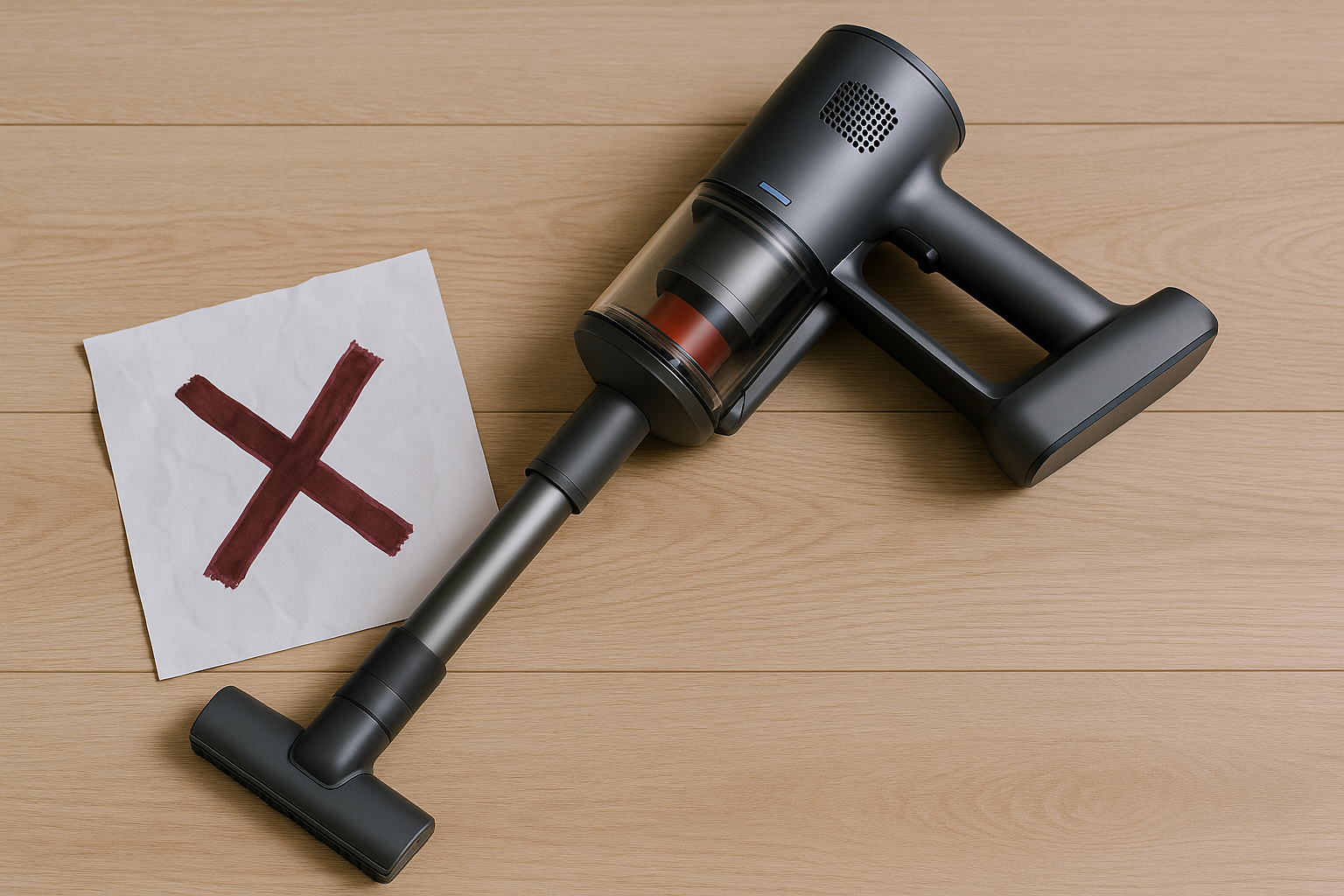
Introduction: Learning from the Mistakes of Others
The Internet of Things (IoT) revolution promised to connect every device to the cloud — from refrigerators to thermostats. But while some IoT products thrived, many failed, leaving behind cautionary tales. For vacuum startups entering global markets, these failures offer a blueprint of what to avoid.
According to a Cisco IoT report, nearly 75% of IoT projects are considered failures, primarily due to poor execution, lack of scalability, or weak after-sales support. Vacuum startups that learn from these mistakes can position themselves as trusted, innovative, and sustainable players in the competitive smart cleaning market.
Lesson 1: Product-Market Fit Is Non-Negotiable
One of the biggest reasons IoT devices fail is because they don’t address real customer needs. Vacuum startups must ensure their products solve specific pain points for B2B buyers.
Industrial buyers may prioritize a High Suction Vacuum Cleaner that handles heavy-duty environments.
Office complexes value a Quiet Vacuum Cleaner to minimize disruption for tenants.
Facility contractors often prefer a Portable Self-Cleaning Vacuum Cleaner that reduces maintenance downtime.
By aligning product design with market realities, startups avoid the “nice-to-have” trap that sank many IoT devices.
Lesson 2: Over-Promising Technology Backfires
Another common IoT failure is over-promising futuristic features that don’t work reliably. Smart vacuums must be robust and consistent before they are marketed as “intelligent.”
Take, for example, a Multi-Functional Durable Vacuum Cleaner. If marketed as “AI-powered” but plagued with software glitches, distributors will quickly lose trust. A safer approach is to highlight practical reliability while gradually introducing smart features.
Lesson 3: Scalability Is Key for Global Growth
IoT failures often occur when products work in controlled pilots but collapse under real-world scaling. Vacuum startups must design with scalability in mind — from supply chain logistics to cloud data infrastructure.
For distributors managing multiple facilities, a Fast Lightweight Vacuum Cleaner that can be deployed in high volume without frequent breakdowns is far more valuable than a flashy prototype that struggles in production.
As Boston Consulting Group notes, scalability is one of the top three hurdles for IoT product adoption worldwide.
Lesson 4: Energy Efficiency and Sustainability Drive Adoption
IoT products often failed because they ignored energy consumption and ESG requirements. In Europe especially, procurement managers demand compliance with energy efficiency regulations.
Vacuum startups can differentiate by emphasizing sustainability:
An Energy-Saving Efficient Powerful Vacuum Cleaner aligns with ESG goals and reduces operational costs.
Offering carbon footprint reporting or smart energy dashboards builds credibility with B2B buyers.
This approach ensures startups don’t repeat the mistakes of IoT devices that fell short on regulatory compliance.
Lesson 5: After-Sales Support Builds Trust
Many IoT startups collapsed because they neglected after-sales service. Devices became “orphaned” after the first breakdown. For vacuums, after-sales can be the deciding factor in distributor retention.
Consider:
A Large-Capacity Wet Dry Vacuum Cleaner backed by regional spare parts hubs builds confidence for large venues like airports.
A Cordless Handheld Vacuum Cleaner supported by quick-ship batteries ensures distributors avoid customer dissatisfaction.
As Gartner highlights, strong after-sales ecosystems significantly increase the likelihood of B2B client retention.
Lesson 6: User Experience Determines Adoption
IoT devices often failed due to clunky user interfaces. Vacuum startups must prioritize usability.
A Cordless Vacuum Cleaner with intuitive controls and easy-to-replace filters encourages repeat purchases.
Wet Dry Vacuum Cleaners that seamlessly switch between cleaning modes simplify operations for facility managers.
User-centered design avoids the frustrations that doomed many IoT devices.
Lesson 7: Avoiding the “Feature Overload” Trap
Some IoT startups failed by adding too many features, overwhelming users. Vacuum startups must focus on clarity:
A 4 in 1 Cordless Smart Wet & Dry Vacuum Cleaner works when it’s marketed as versatile yet simple, not overloaded with confusing gimmicks.
Similarly, a Car Vacuum Cleaner can thrive if positioned as a reliable, specialized solution rather than a jack-of-all-trades.
Clarity of value ensures buyers know exactly what problem the product solves.
Lesson 8: Data Security Cannot Be an Afterthought
IoT devices frequently failed because of weak cybersecurity. Startups must safeguard buyer data from day one. Secure connections, encrypted data, and compliance with EU GDPR are essential for vacuum products that collect and transmit usage data.
Without robust security, even the best Quiet Vacuum Cleaner with IoT features will fail in regulated markets.
Lesson 9: Partnerships Accelerate Success
IoT startups that survived often partnered with established ecosystems. Vacuum startups can do the same by forming alliances with facility management companies, distributors, and certification agencies.
By embedding products into larger ecosystems, vacuums like the Multi-Functional Durable Vacuum Cleaner gain credibility and scale faster.
Lesson 10: Building Trust Through Transparency
Finally, many IoT devices failed due to lack of transparency in performance data. Startups must proactively share results — from energy savings to durability testing.
Regular reporting reassures distributors that vacuums, whether Wet Dry Vacuum Cleaners or Fast Lightweight Vacuum Cleaners, deliver consistent value. Transparency builds long-term trust.
Conclusion: Turning IoT Failures into Competitive Advantages
Vacuum startups entering global markets face challenges similar to past IoT ventures. By learning from IoT failures — avoiding over-promising, ensuring scalability, prioritizing after-sales, and safeguarding security — startups can chart a more sustainable path.
Every product, from a High Suction Vacuum Cleaner to a Cordless Handheld Vacuum Cleaner, must be designed with trust, usability, and long-term value at its core.
👉 Learn more about sustainable vacuum innovation at www.lxvacuum.com
📌 Hashtags
#VacuumStartups, #IoTDeviceFailures, #HighSuctionVacuumCleaner, #QuietVacuumCleaner, #PortableSelfCleaningVacuumCleaner, #MultiFunctionalDurableVacuumCleaner, #FastLightweightVacuumCleaner, #EnergySavingEfficientPowerfulVacuumCleaner, #LargeCapacityWetDryVacuumCleaner, #CordlessHandheldVacuumCleaner, #WetDryVacuumCleaners, #4in1CordlessSmartWetDryVacuumCleaner, #CordlessVacuumCleaner, #CarVacuumCleaner, #SmartVacuumStartups, #IoTLessons, #VacuumProductDevelopment, #IoTScalability, #PredictiveMaintenance, #EnergyEfficientVacuums, #SustainableVacuumDesign, #B2BVacuumProcurement, #VacuumInnovation, #IoTDeviceSecurity, #VacuumMarketEntry, #StartupStrategy, #SmartCleaningSolutions, #VacuumProductFailures, #IoTAdoption, #VacuumAfterSales, #VacuumBusinessGrowth, #IoTUserExperience, #VacuumProductDesign, #SmartFacilityProcurement, #IoTTransparency, #VacuumLifecycleManagement, #StartupProcurementInsights, #IoTProductLessons, #VacuumScalability, #IndustrialVacuumStartups, #DataDrivenVacuumDesign, #VacuumSupplierStrategy, #IoTMarketTrends, #SmartApplianceLessons, #VacuumMarketInnovation, #GlobalVacuumStartups, #SustainableProcurement, #FutureOfVacuumStartups, #lxvacuum
















